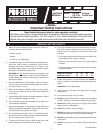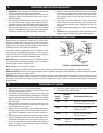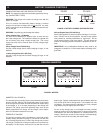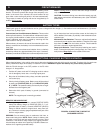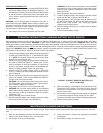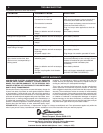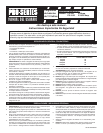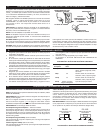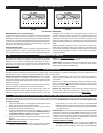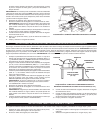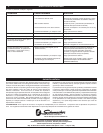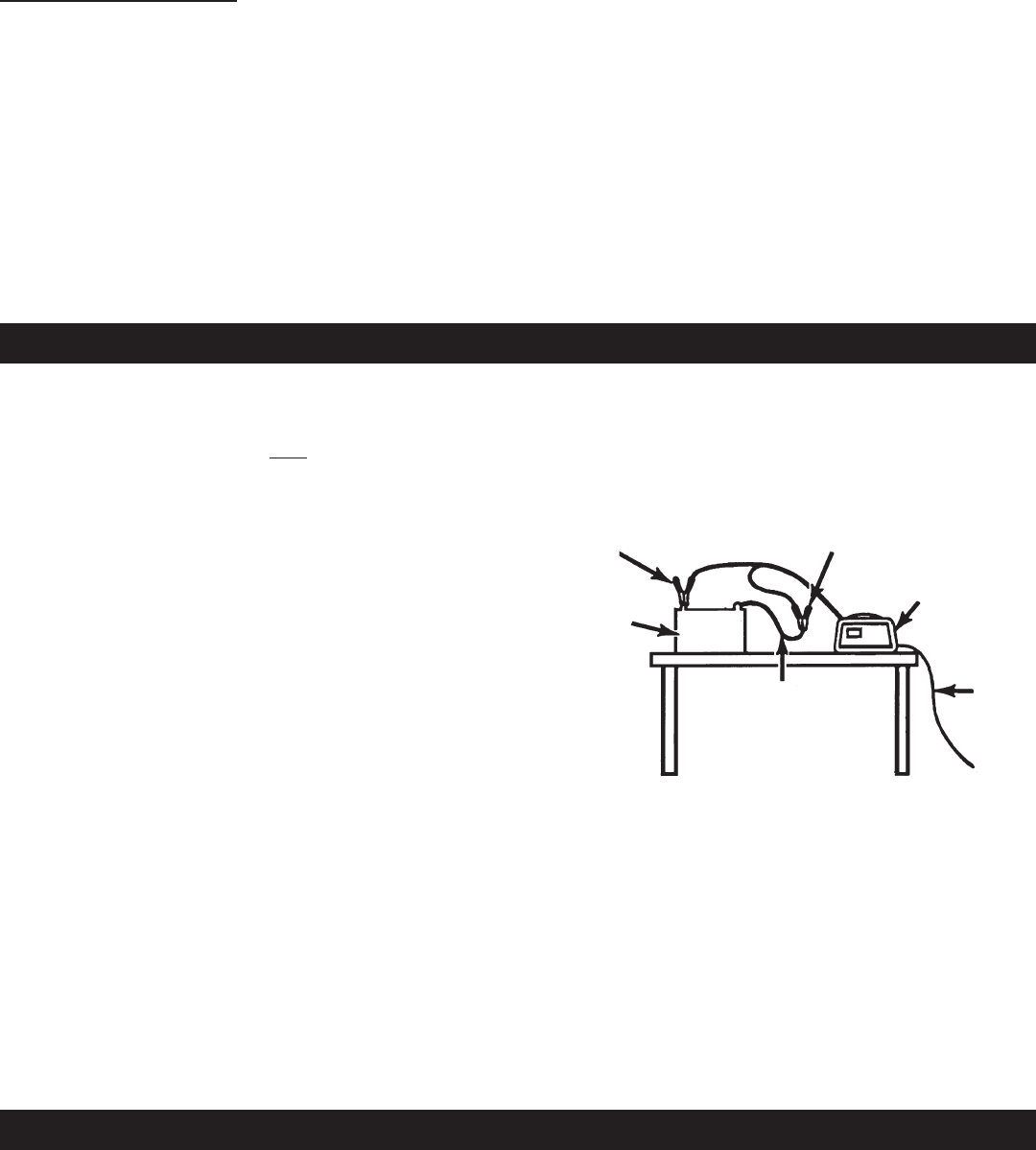
5
1. Check polarity of battery posts. Battery case will be marked
by each post: POSITIVE (POS, P, +) and NEGATIVE (NEG,
N, -). NOTE: The positive battery post usually has a larger
diameter than the negative post.
2. Attach a 24" long (or longer) 6-gauge (AWG) insulated bat-
tery cable to NEGATIVE (NEG, N, -) battery post. The 24"
cable is necessary to avoid the possibility of a spark over
the top of the battery. 6-gauge cable is recommended be-
cause it is readily available at your auto parts store.
3. Connect POSITIVE (RED) charger clamp to POSITIVE
(POS, P, +) battery post. Rock clamp back and forth to make
good connection.
4. Position yourself and free end of 24" cable as far away from
battery as possible. Then connect NEGATIVE (BLACK)
charger clamp to free end of cable.
WARNING: Do not face battery when making final connec-
tion. Rock clamp back and forth to make a good connec-
tion. FIGURE 7 shows the connection.
5. Plug charger AC cord into a 120 volt grounded outlet.
WARNING: Be sure area around battery is well ventilated
while battery is being charged. Gas can be forcefully blown
away by using a piece of cardboard or other non-metallic
material as a fan.
6. Select amperage: See Controls Section.
7. Continue charging battery until charger's ammeter needle
shows half the rate of charge. (See FIGURE 4.)
When charging a battery out of the vehicle, take care to determine the battery type. To reduce risk of a spark near the battery, follow these
steps when battery is outside vehicle. WARNING: A spark near the battery may cause battery explosion. WARNING: When removing
battery from vehicle or boat, disconnect grounded post first. When disconnecting, make sure all accessories are off, so as not to cause an
arc. NOTE: A marine (boat) battery must be removed and charged on shore. To charge on board requires special equipment designed for
marine use. WARNING: When reinstalling the battery, attach the grounded post first—making sure model PS-620 has its switch in the
OFF position or that model PS-1025 has its switch in the 2 Amp position.
BATTERY
8. When the battery is fully charged, move the switch on the
PS-620 to the OFF position. For model PS-1025, move the
switch to the 2 Amp position. Then, unplug the charger from
the AC power source.
9. When battery is fully charged and the charger is unplugged
(1) disconnect negative charger clamp from 24” cable.
(2) remove positive charger clamp from positive battery post.
10. Clean and store battery charger.
J. OPERATING INSTRUCTIONS: CHARGING BATTERY OUT OF VEHICLE
FIGURE 7: CONNECT NEGATIVE BATTERY CLIP
TO 24" CABLE END
TO GROUNDED
POWER OUTLET
NEGATIVE
POSITIVE
24", 6 GAUGE
CABLE
POWER
CORD
+-
BATTERY CHARGER
POSITIVE GROUNDED POST
5B. For positive-grounded vehicle, connect NEGATIVE (BLACK)
clamp from battery charger to NEGATIVE (NEG, N, -) un-
grounded post of battery. Connect POSITIVE (RED) clamp
to vehicle chassis or engine block away from battery. Con-
nect to a heavy gauge unpainted metal part of the frame or
engine block.
WARNING: Do not connect clamp to carburetor, fuel lines, or
sheet-metal body parts. NOTE: Attach clamps to battery post
and twist or rock back and forth several times to make a good
connection. This tends to keep clamps from slipping off termi-
nals and helps to reduce risk of sparking.
6. Plug charger AC cord into a grounded 120 volt outlet.
WARNING: Be sure area around battery is well ventilated
while battery is being charged. Gas can be forcefully blown
away by using a piece of cardboard or other non-metallic
material as a fan.
7. Select amperage: See Controls Section.
8. Continue charging battery until charger's ammeter needle
shows half the rate of charge. (See FIGURE 4)
9. When the battery is fully charged, move the switch to OFF
for the PS-620 model. For the PS-1025 model, move the
switch to the 2 Amp position. Then, unplug your specific
charger from AC power source.
10. Remove charger clamps from (1) chassis and (2) battery
post, in that order.
11. Clean and store battery charger.
Very little maintenance is required for the battery charger. Follow common sense in wiping the charger clean and store in a clean, dry
area.
K. MAINTENANCE/CLEANING INSTRUCTIONS
1. After use, wipe all battery corrosion and other dirt or oil from
clamp, cords, and the charger case. Use a dry cloth.
2. Coil charger cords to prevent damage.
3. Have any cracked or frayed cords replaced by a qualified
professional.
4. Store battery charger in a clean, dry area.



